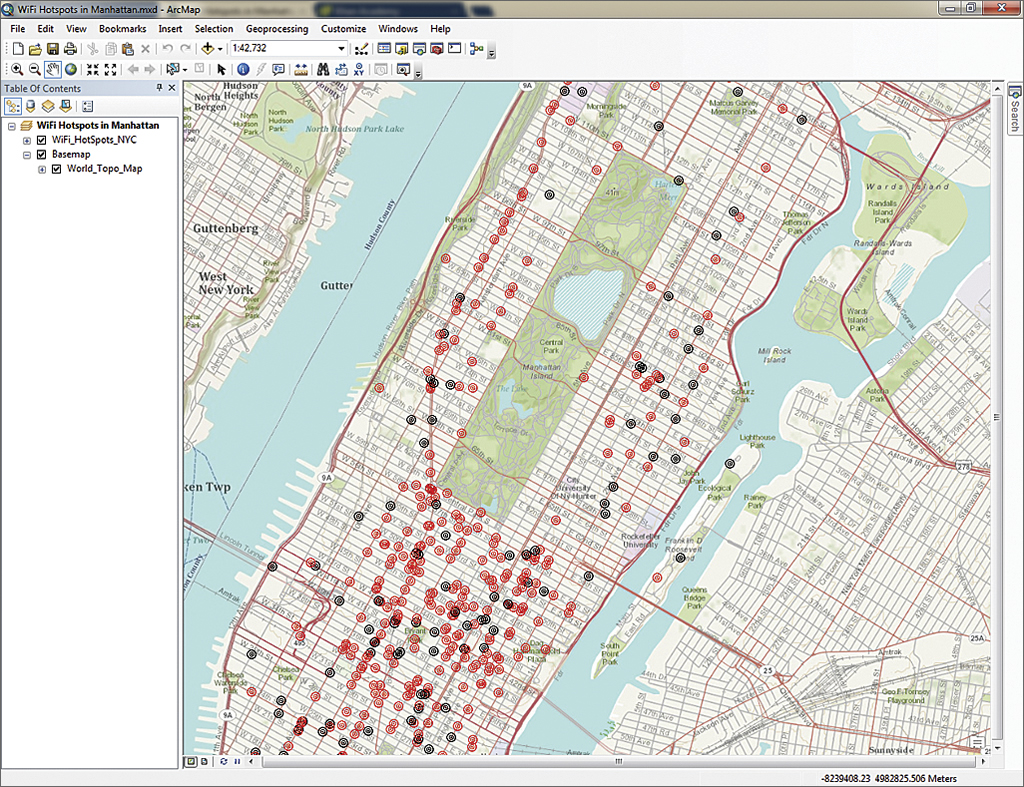File Geodatabase Extension

The geodatabase is a 'container' used to hold a collection of datasets. There are three types: • File geodatabases—Stored as folders in a file system. Each dataset is held as a file that can scale up to 1 TB in size. The file geodatabase is recommended over personal geodatabases. • Personal geodatabases—All datasets are stored within a Microsoft Access data file, which is limited in size to 2 GB. • ArcSDE geodatabases—Also known as multiuser geodatabases. Stored in a relational database using Oracle, Microsoft SQL Server, IBM DB2, IBM Informix, or PostgreSQL.
A file geodatabase is a collection of files in a folder on disk that can store, query, and manage both spatial and nonspatial data. You create a file geodatabase in ArcGIS. File geodatabases are made up of seven system tables plus user data. ESRI File Geodatabase (OpenFileGDB). And it must end with the.gdb extension. Robust against corrupted Geodatabase files. GDBTABLE file: ArcGIS Geodatabase Table. Read here what the GDBTABLE file is, and what application you need to open or convert it. How to open a map from gdb? If you are not able to see the file geodatabase contents, it might be corrupted. What version of software do you have?
These geodatabases require the use of ArcSDE and can be unlimited in size and numbers of users. File geodatabases and personal geodatabases File and personal geodatabases, which are freely available to all users of ArcGIS for Desktop Basic, Standard, and Advanced, are designed to support the full information model of the geodatabase, which comprises topologies, raster catalogs, network datasets, terrain datasets, address locators, and so on. File and personal geodatabases are designed to be edited by a single user and do not support geodatabase versioning. With a file geodatabase, it is possible to have more than one editor at the same time provided they are editing in different feature datasets, stand-alone feature classes, or tables. Atrocity Atlantis Rar there. The file geodatabase was a new geodatabase type released in ArcGIS 9.2. Buku Belajar Piano Untuk Pemula. Its goals are to do the following: • Provide a widely available, simple, and scalable geodatabase solution for all users. • Provide a portable geodatabase that works across operating systems.
• Scale up to handle very large datasets. • Provide excellent performance and scalability, for example, to support individual datasets containing well over 300 million features and datasets that can scale beyond 500 GB per file with very fast performance. • Use an efficient data structure that is optimized for performance and storage. File geodatabases use about one-third of the feature geometry storage required by shapefiles and personal geodatabases. File geodatabases also allow users to compress vector data to a read-only format to reduce storage requirements even further.
• Outperform shapefiles for operations involving attributes and scale the data size limits way beyond shapefile limits. Catia 32 Bit. Personal geodatabases have been used in ArcGIS since their initial release in version 8.0 and have used the Microsoft Access data file structure (the.mdb file). They support geodatabases that are limited in size to 2 GB or less. However, the effective database size is smaller, somewhere between 250 and 500 MB, before the database performance starts to slow down. Personal geodatabases are also only supported on the Microsoft Windows operating system. Users like the table operations they can perform using Microsoft Access on personal geodatabases.
Many users really like the text-handling capabilities in Microsoft Access for working with attribute values. ArcGIS will continue to support personal geodatabases for numerous purposes. However, in most cases, Esri recommends using file geodatabases for their scalability in size, significantly faster performance, and cross-platform use. The file geodatabase is ideal for working with file-based datasets for GIS projects, personal use, and in small workgroups. It has strong performance and scales well to hold extremely large data volumes without requiring the use of a DBMS. Plus, it is portable across operating systems. Typically, users will employ multiple file or personal geodatabases for their data collections and access these simultaneously for their GIS work.